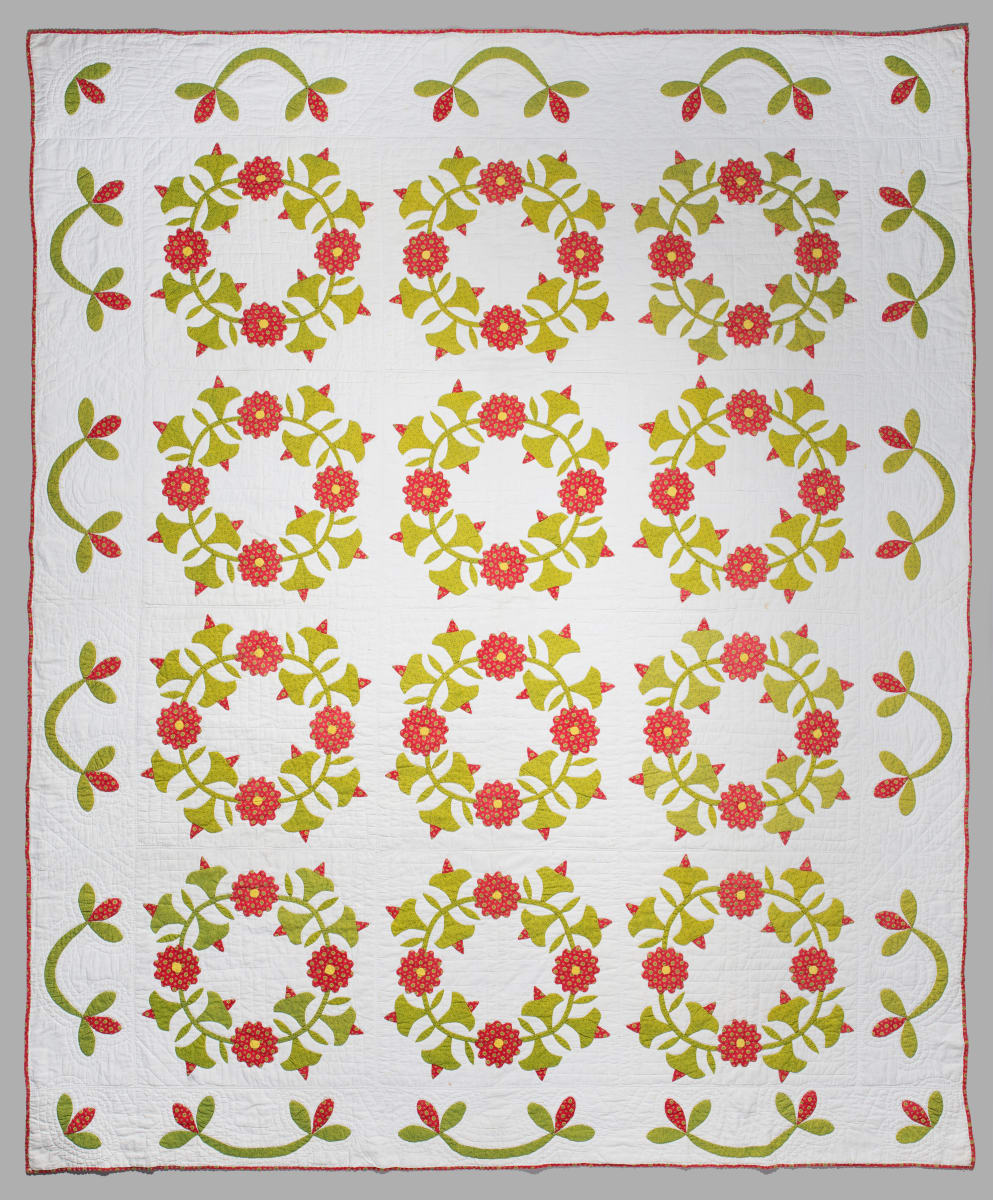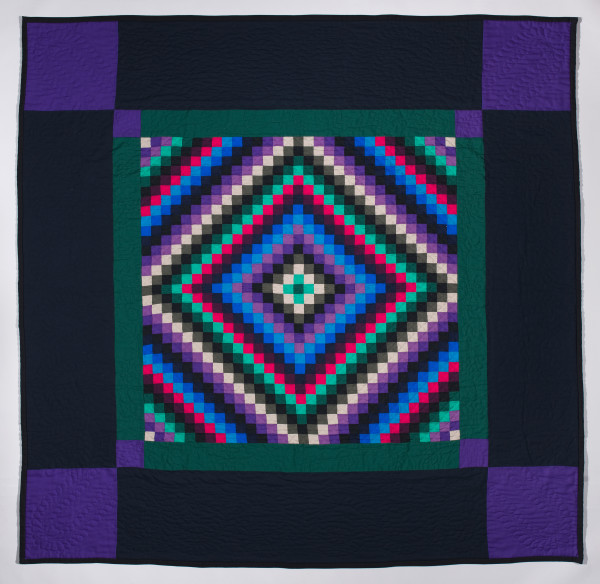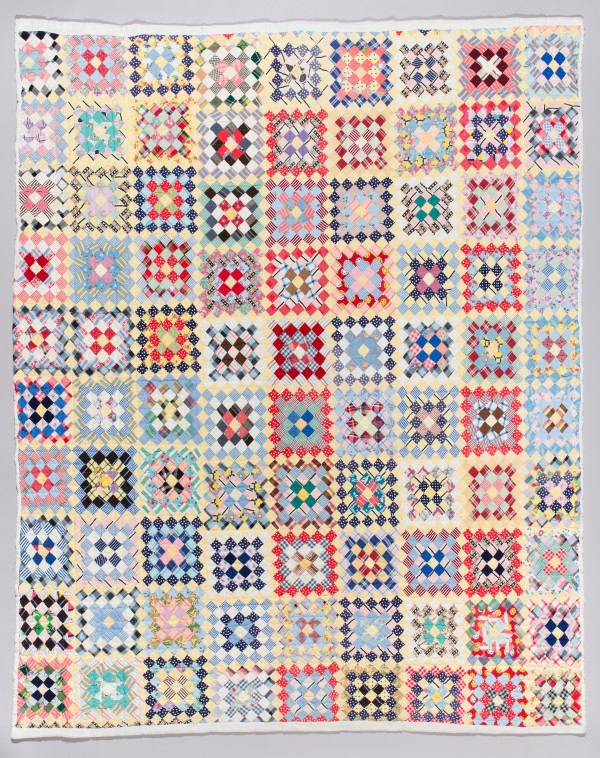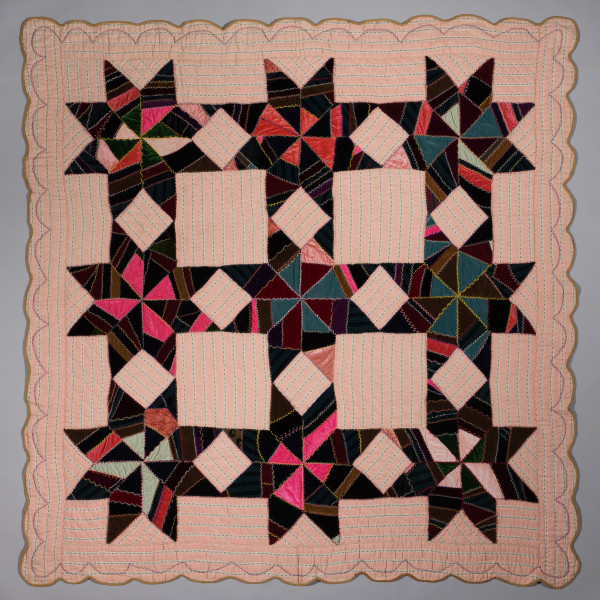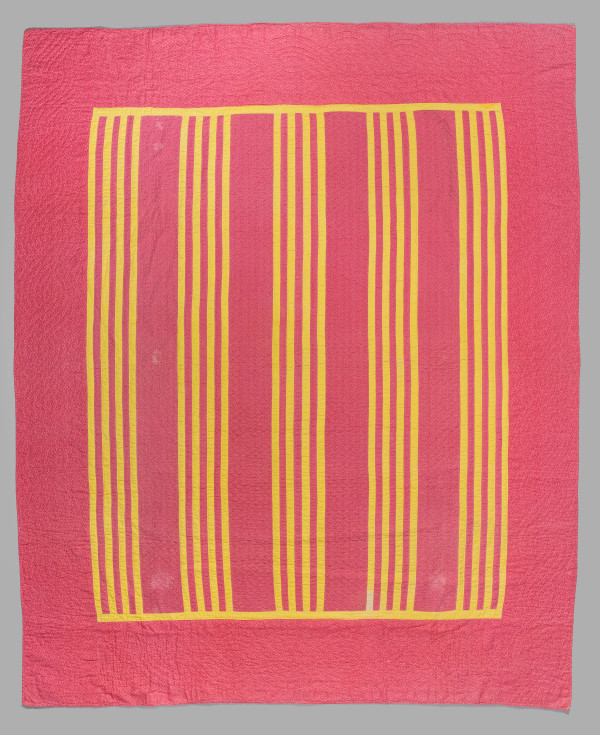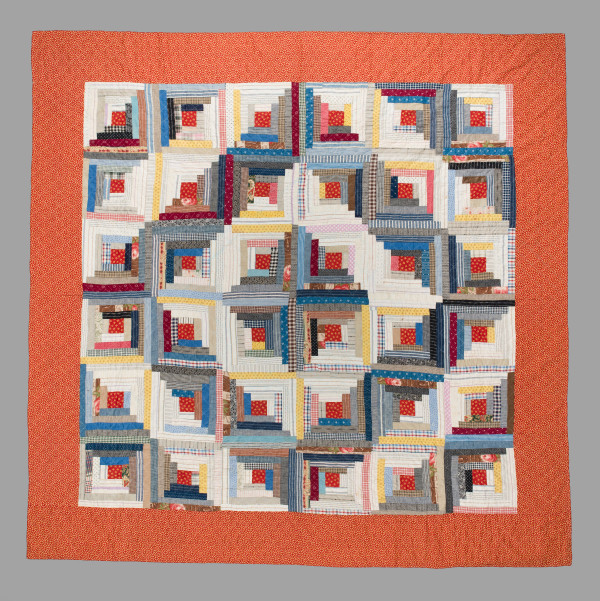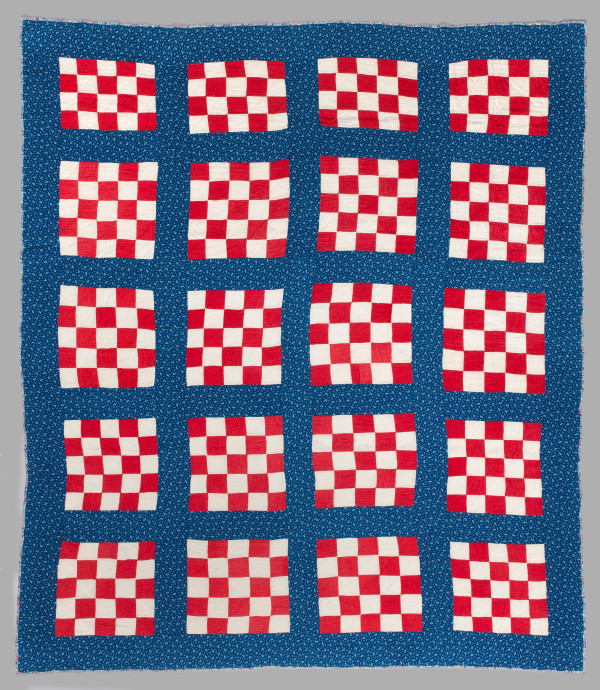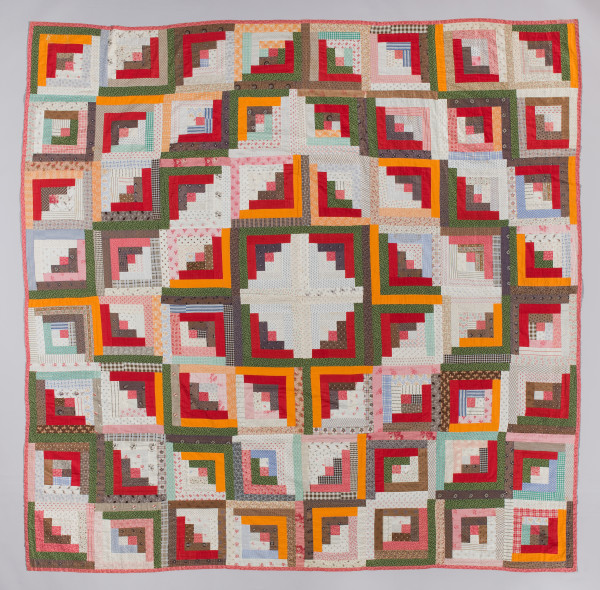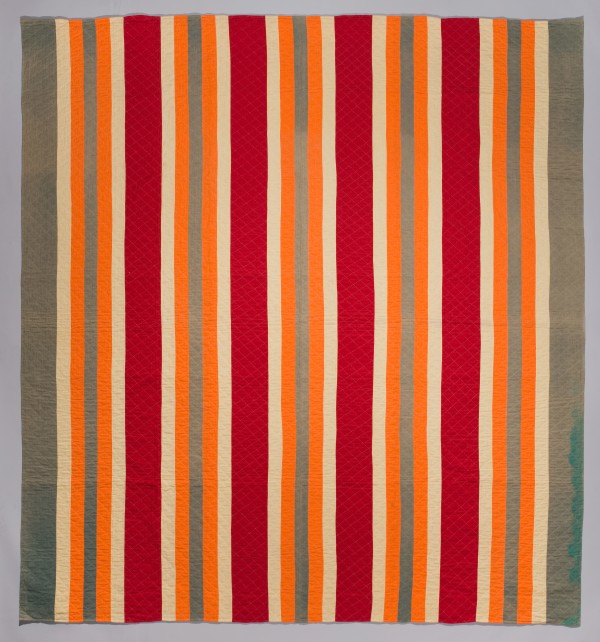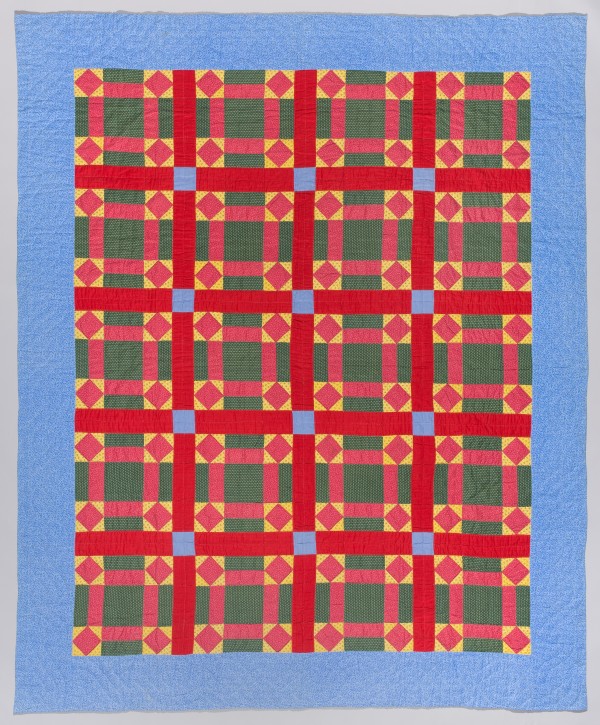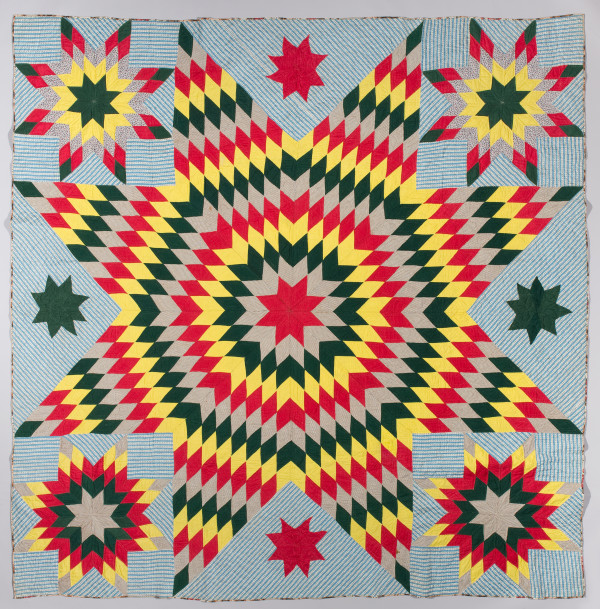- Unknown Artist
- Rose of Sharon Quilt, 1880
- Cotton
- 98 x 81 in (248.92 x 205.74 cm)
- Inv: 1996.241.014
The Rose of Sharon was one of the most popular applique patterns during the nineteenth-century. Its name is believed to derive from the old Testament "Song of Songs" or "Song of Solomon," which is sometimes interpreted as a celebration of wedded love. Because of this association the Rose of Sharon is a common bridal motif on quilts and linen. Variations of the design include the Whig Rose, Kentucky Rose, Tea Rose, and Mexican Rose. The general design, however, includes red or pink flowers, sometimes both, attached to green stems with vines arranged in squares, crisscrosses, or as in this case, circular wreaths.
This particular quilt dates to the late nineteenth-century. The date is determined by a number of factors, key among them being the fabric. Block applique quilts of red and green fabric were quite popular in the middle of the nineteenth-century, and were almost always made as "best" quilts. They represented the maker's most skillful work and were reserved for use only on very special occasions. Additional consideration in the dating of this piece is its design. In the early nineteenth-century, large central medallion compositions were in vogue for appliqued quilts. As the decades passed, these quilt designs were broken down into smaller blocks, first four, then increasingly smaller and more numerous blocks, culmination in album-style quilts in mid-century.
The green that is used in this quilt was achieved by a two-step chemical over-dying process, applying either blue dye over yellow or yellow dye over blue. These over-dyed greens were nearly always unstable and quickly changed in color. They were, however, favored with quilt makers for the interesting shades they took on with age.
Techniques: Hand appliqued, hand quilted
Culture: American
Geographic Location: North and Central America, United States.
Credit Line: Gift of Bruce Berman
- Subject Matter: American Victorian Era

